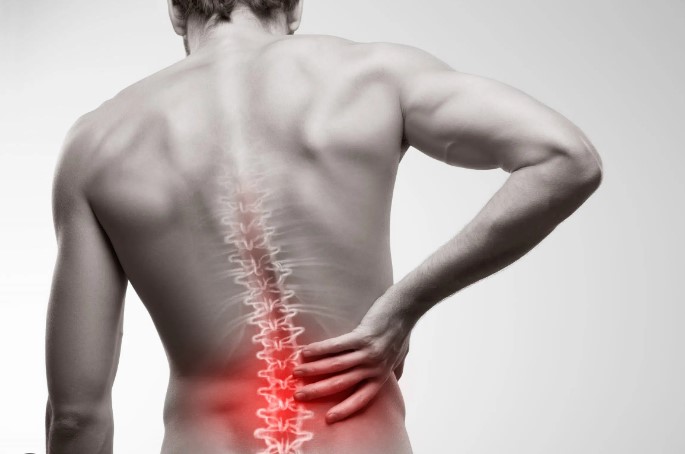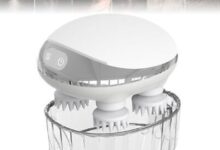How to Treat Lower Back Pain?

Lower back pain is one of the most prevalent health problems from which millions suffer all over the world. It can occur as a result of injury, bad posture, chronic conditions, and so forth, and nearly always affects how one goes about their day-to-day activities. The situation can worsen if it is not given any attention, so early measures are taken to address this matter.
It is a good thing, then, that treatment options for back pain have widely developed over the years, which include simple and cheap home treatments to complex professional healthcare systems, such as doctor at home service that offers the utmost convenience of all the healthcare services in the center and a healthcare practitioner comes over to the house. In this blog, we aim to discuss the best approaches to comprehend, avoid, and manage lower back pain.
Understanding Lower Back Pain
Pain in the lower back is usually due to problems with the bones, muscles, tendons, ligaments, or nerves in that area. It can be for short-term or acute, that is, a few days to weeks, or for periods longer than three months, chronic lower back pain.
In order to alleviate the condition, one must first understand the sources of back pain and the proper management of the condition.
Some, perhaps after making adjustments to their way of life or engaging in physical therapy, could get better, while others, perhaps, would need medication of some sort. Let’s examine the factors that could lead to lower back pain so that we can better appreciate this phenomenon.
5 Main Causes of Lower Back Pain
There are different causes of lower back pain, and understanding them helps identify the right treatment. These include the following five most common ones:
- Muscle Strains & Ligament Sprains
This type of injury occurs when the back muscles are too strenuous for activities, heavy weights, or quick actions. Strains and sprains of this nature are some of the major contributory factors of lower back pains, and they are often treated through enough sleep, cold compresses, and mobility after some time.
- Poor Posture & Lifestyle Habits
Chronic low back pain is also associated with prolonged sitting, more so with wrong postures. This can be avoided through physical activity, stretching, and proper modification of the work environment.
- Herniated or Bulging Discs
Related to the previous cause, a herniated disc may cause back pain when the disk bulges or ruptures, encroaching on nerves even in the lower back region. This condition is more often treated with specific back pain therapies or by calling a home visit doctor for assessment and treatment.
- Arthritis & Degenerative Disc Disease
Chronic illnesses such as arthritis and degenerative disc diseases are often linked with lower back pain and are more prevalent with aging. Arthritis is accompanied by swelling and rigidity, while degenerative disc disease is due to the deterioration of the spinal discs. Treatment for these conditions will often entail physical therapy, medication, and, in some cases, injections to control pain.
- Sciatica
When the sciatic nerve, one that extends from the lower back, passes through the hips and branches down the legs, becomes irritated or compressed, sciatica occurs. This may result in lower back pain that is often sharp and radiates to one leg. Motions such as coughing, sneezing, and bending forward can cause sciatica resulting from a herniated or ruptured disc or spinal stenosis, and physiotherapy and active rehabilitation exercises help with the signs and symptoms of the condition.
Read also: Exploring The Long-Term Benefits Of Facet Joint Injections For Spine Health
5 Essential Tips to Treat Lower Back Pain
Although some instances of lower back pain may necessitate the assistance of a medical practitioner, there are some strategies that can be employed within the house to lessen the pain:
- Exercise Regularly & Stay Active
Walking, swimming, and yoga are some light exercises that enhance one’s back muscle and flexibility. If the lower back pain is of short duration, some recommended activities are stretching, and low-impact exercises and a doctor at one’s home will help one choose appropriate activities.
- Apply Heat & Cold Therapy
For young cases of pains within the back or any other pains causing noncognitive endurance, ice packs are recommended for application on the painful areas for at least 15- 20 minutes several times a day. When heat therapy is used, after a few days of cold therapy massage, it is used to relax the muscles and promote healing by increasing blood circulation.
- Mind Your Posture & Ergonomics
Proper body posture is essential, especially while sitting or lifting something, as it relieves excess strain from the lower back. For example, it is probable that one may use an ergonomic chair and keep the computer screen at eye level to avoid slouching, hence the back strain. It is indeed interesting to note that the simple act of maintaining a good body posture can treat back pains.
- Consider Seeking Professional Help
When self-care measures are not successful in alleviating low back pain, it is very important to report to a care provider. A doctor at home who arrives at your house can assess you and give such orders or treatment as may be appropriate to the situation, thus offering a more individualistic style of care in the patient’s residence.
- Incorporate Mind-Body Practices
Mindfulness meditation, deep breathing, and progressive muscle relaxation are examples of other techniques that aim for the management of pain through the alleviation of stress and the promotion of relaxation. These methods decrease muscular tension, which would be of great importance, especially if the lower back ache is due to prolonged levels of stress.
The Final Words
One of the most common conditions is lower back pain, which can occur for multiple reasons and does not pose a problem, provided the right measures are taken. Knowing the reasons behind back pain and how to treat it helps alleviate the pain and improve the quality of life. In other words, rather than just the above, there are means to address these concerns and bring the body back to an evenly balanced state through such means as changes in lifestyle, remedies that can be self-administered at home, or even having a doctor visit one at their home.





